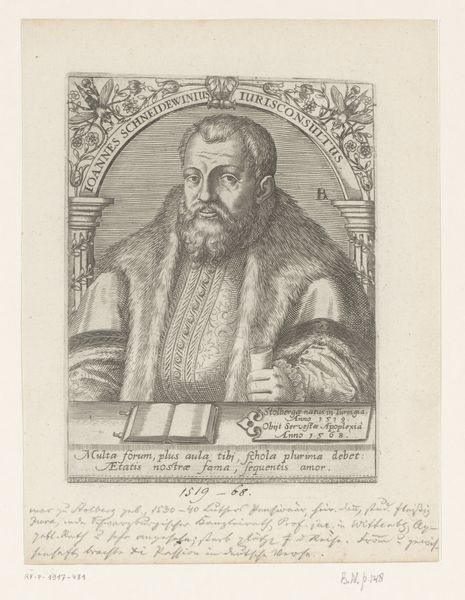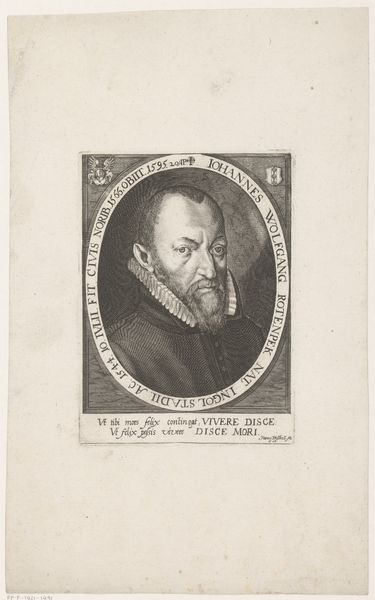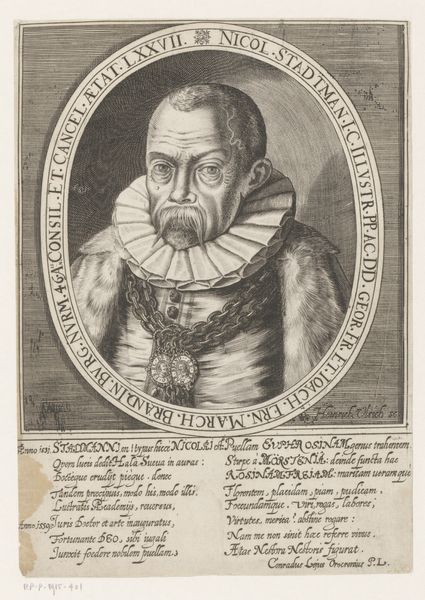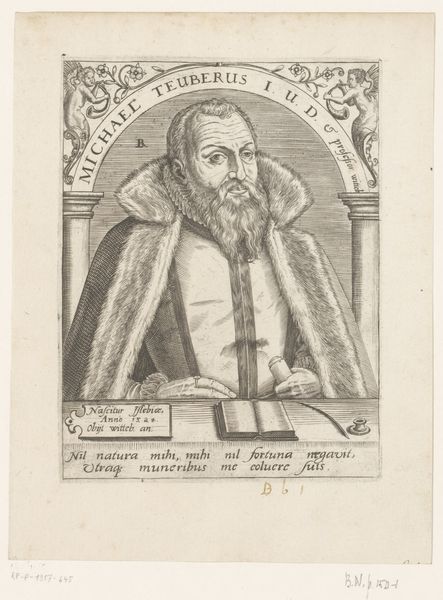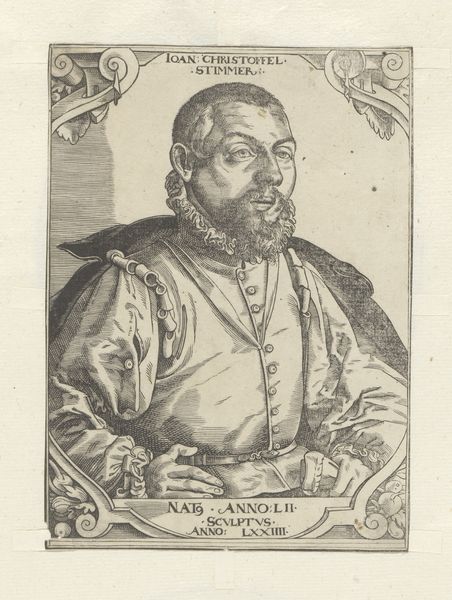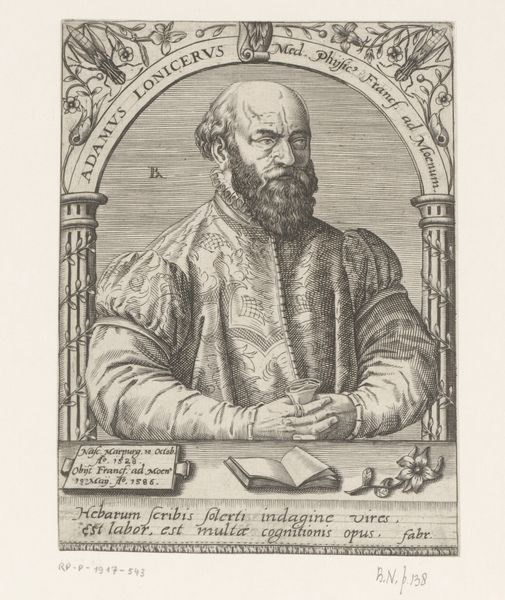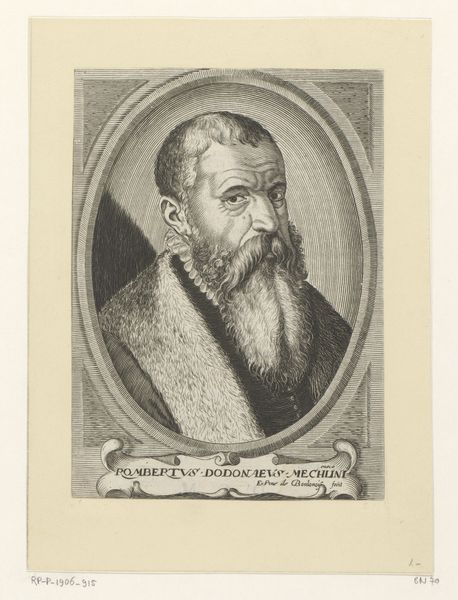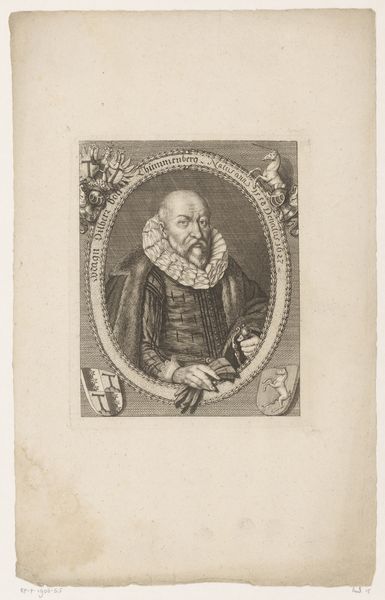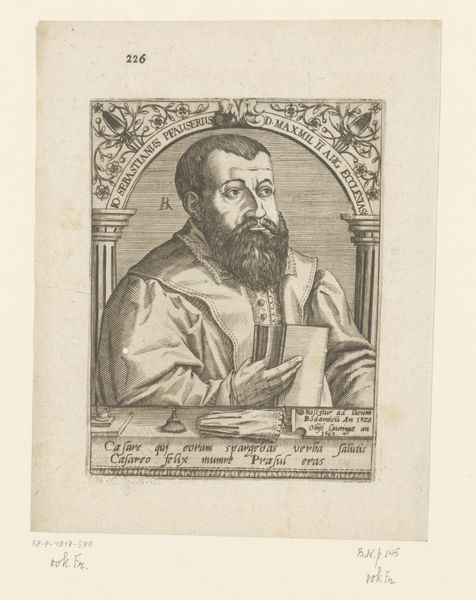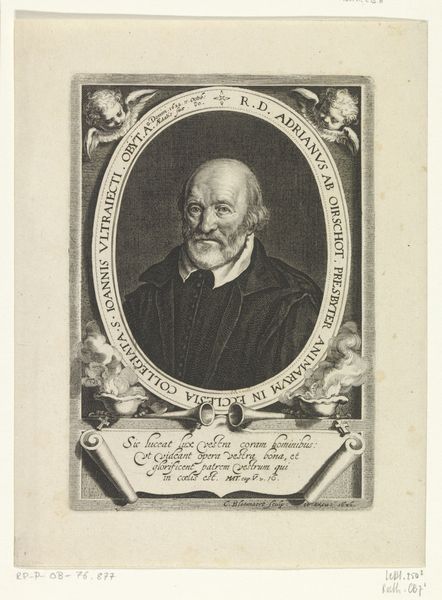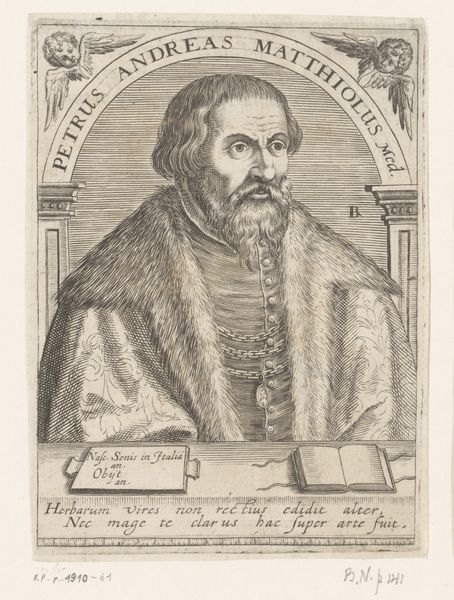
print, engraving
#
portrait
#
aged paper
#
toned paper
# print
#
book
#
old engraving style
#
11_renaissance
#
personal sketchbook
#
history-painting
#
northern-renaissance
#
engraving
Dimensions: height 137 mm, width 106 mm
Copyright: Rijks Museum: Open Domain
Curator: Here we have a Northern Renaissance engraving, dating back to the late 16th century, specifically 1597-1599. It’s titled "Portret van Johann Winter von Andernach," created by Robert Boissard. It’s currently housed in the Rijksmuseum. Editor: The immediate impression is one of profound intensity. The subject’s gaze is strikingly direct. The crisp lines create a severe yet captivating representation. Curator: Indeed. Considering the printmaking process, the labour involved in carefully etching the copperplate to produce this level of detail would have been considerable. This wasn't a quick or simple task; it involved skilled artisans and time-consuming methods. The paper choice matters, too, with its unique properties influencing how the ink interacts and presents. Editor: Absolutely, and let’s consider what's being represented. We have this portrait, encased within classical architectural elements which suggest virtue and stability, framing the man within an aura of significance. His fur-lined coat is a symbol of status. The chain he wears speaks to societal rank or membership of some learned society. Curator: We cannot ignore the inscription beneath the portrait. Boissard, through this text, reinforces the sitter's identity as a medical professional and highlights themes of healing, mortality, and his ability to defy death. Editor: Looking closely, even the insects within the surrounding flourishes must surely have been carefully chosen as potent symbols. In renaissance symbolism insects may have various symbolic interpretations including metamorphosis or acting as symbols of decay. What is remarkable is that it allows viewers an invitation into this man's life and his historical milieu. Curator: Examining how these prints were consumed reveals insight too. Engravings allowed wider dissemination of images, effectively creating early forms of mass media to educate the masses. Editor: Precisely. The very act of disseminating such an image broadcasts status and renown. It reinforces not just who Johann Winter von Andernach was, but why his memory was deemed worthy of perpetuation. Curator: From a material perspective, understanding printmaking as a process, reveals this piece as both artwork and a valuable historical object with significant socio-cultural value. Editor: By exploring the imagery, this engraving provides a lens through which to understand the cultural values of the era. It offers insight into what attributes Renaissance society admired.
Comments
No comments
Be the first to comment and join the conversation on the ultimate creative platform.
